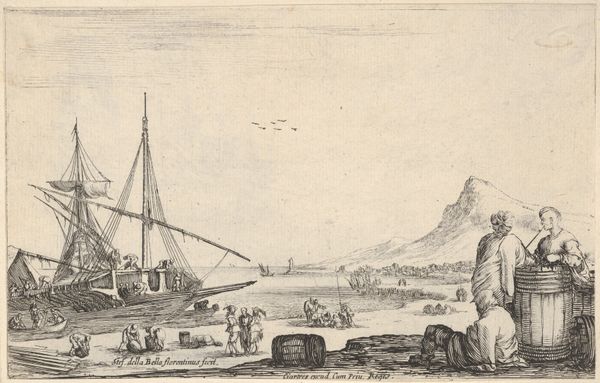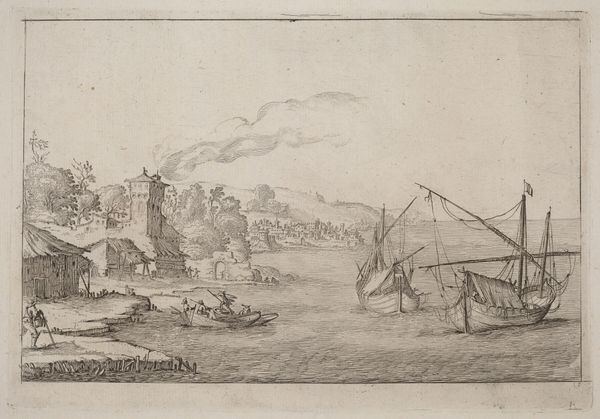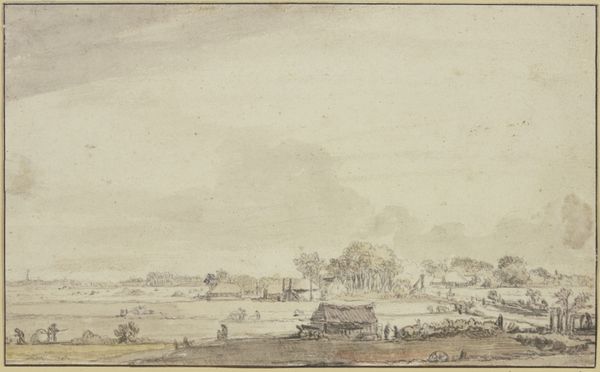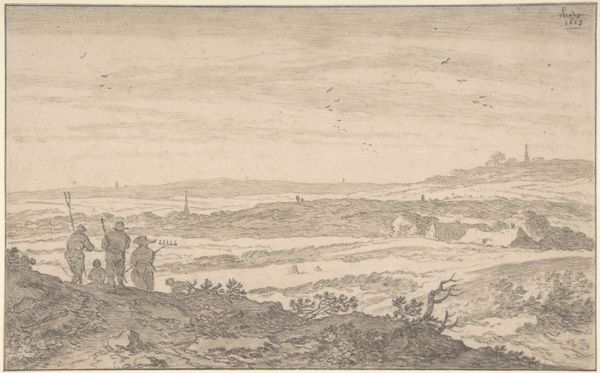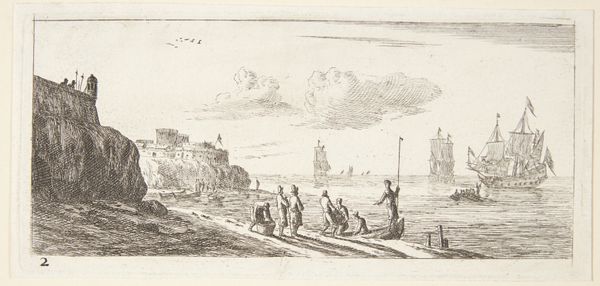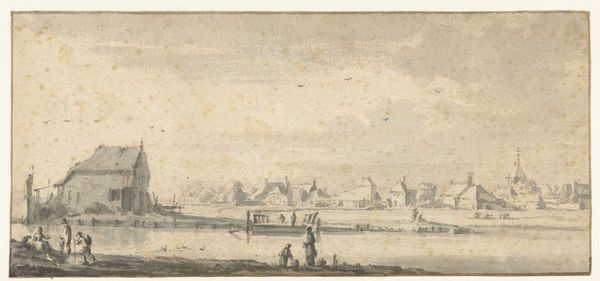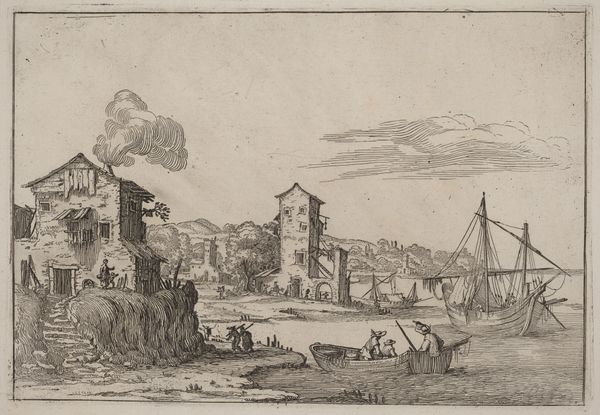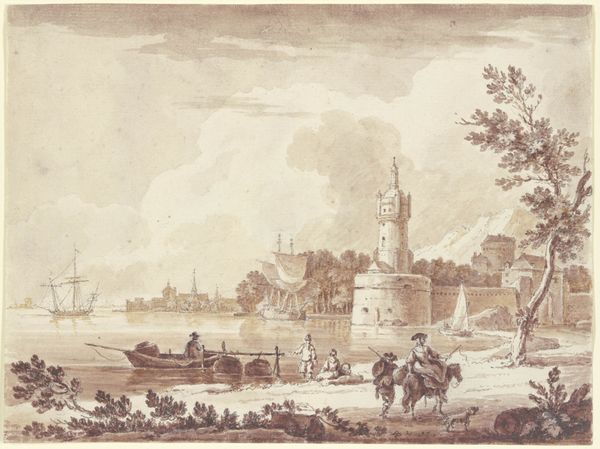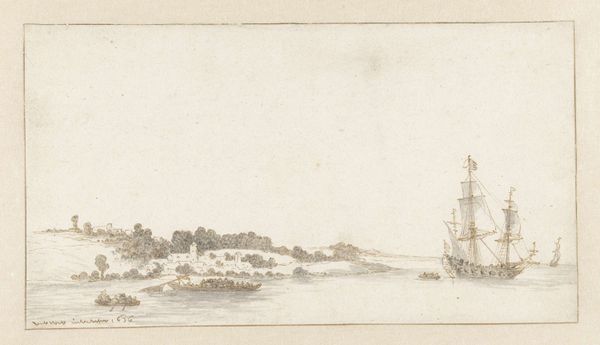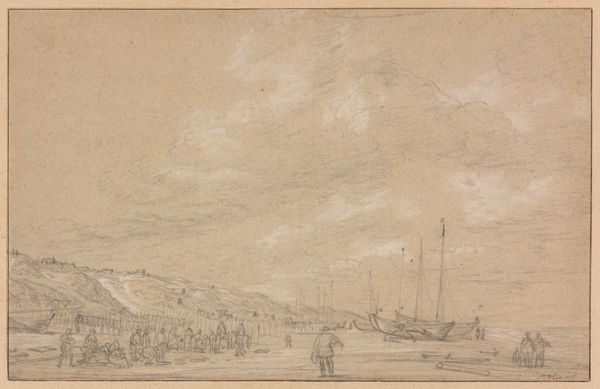
drawing, ink, pen
#
drawing
#
baroque
#
ink painting
#
pencil sketch
#
landscape
#
etching
#
ink
#
pen
#
cityscape
Dimensions: 187 mm (height) x 239 mm (width) (bladmaal)
Johannes Lingelbach rendered this harbor scene in pen and brown ink with grey wash sometime in the mid-17th century. The drawing is not dated but Lingelbach spent considerable time in Italy, and the scene is most likely a Mediterranean port. As an art historian, it is my task to consider the politics of imagery, and what this drawing may have meant in the social and cultural context of its time. We might ask, what was the public role of such art? Was it simply picturesque? Did it comment on Dutch maritime trade? The Dutch Golden Age saw an explosion of genre painting. The institutions of art such as the Guild of Saint Luke shaped artistic production, but so too did the Protestant Reformation which affected traditional religious imagery. Such harbor scenes, then, may represent a shift towards secular subjects and a celebration of Dutch mercantile power. Further research into Lingelbach’s patrons and the market for such drawings would help us to understand it better.
Comments
No comments
Be the first to comment and join the conversation on the ultimate creative platform.
